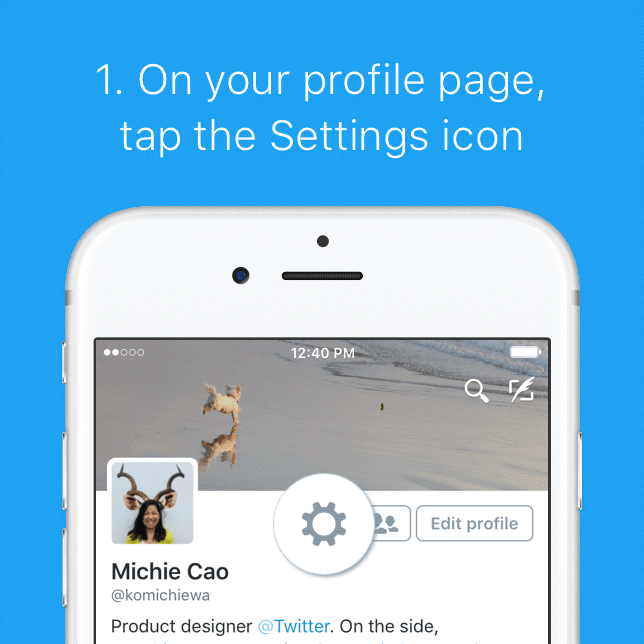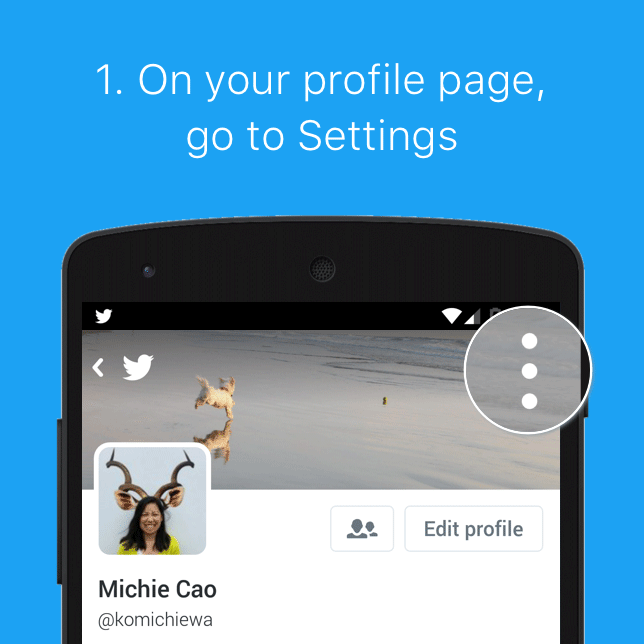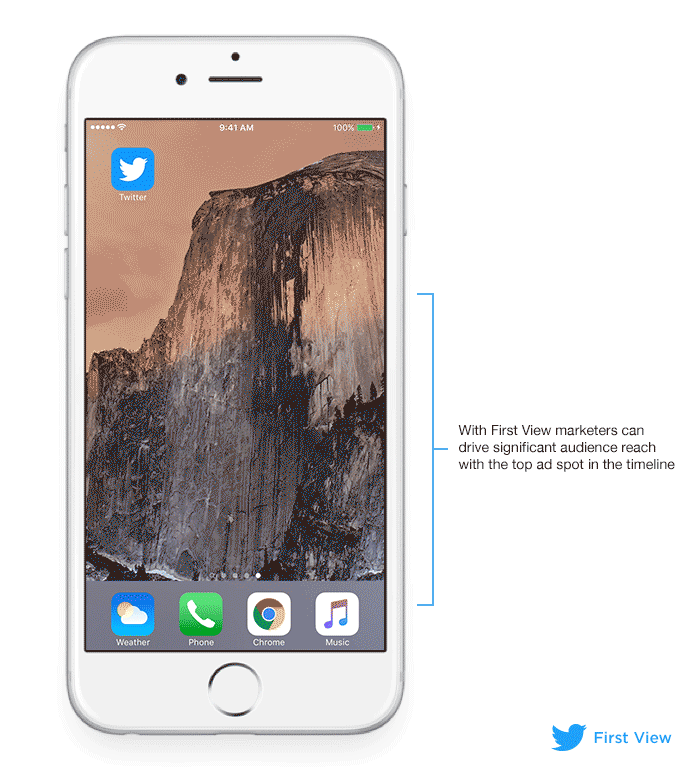This post originally published on February 18, 2016. We’ve updated it here with the latest change to Twitter’s algorithm-based timeline.
Over recent months, there has been a lot of debate about the future of Twitter.
Growth has halted, share prices have fallen, and some are even saying #RIPTwitter.
With all that in mind, the future of Twitter still feels extremely exciting, though. It feels like something big is afoot. And in order to kickstart growth and get people excited again, Twitter has been rolling out a range of great new features and updates.
In this post, I’d love to give you the lowdown on Twitter’s newest features and also share some thoughts on where it may be heading in the future.
Let’s get started! ?
Best Tweets first
There have been rumours that Twitter could introduce an algorithmic timeline for years. Some users feel it’s just what Twitter needs, whereas others aren’t so sure, believing it could bring an end to the network.
Talking Point: I’d love to hear your thoughts on a fully algorithmic timeline in the comments below this post, do you feel it would make or break Twitter?
Though a fully revamped algorithmic feed was rumoured, with this update, rather than changing the feed altogether, Twitter is essentially making its ‘while you were away feature‘ a little more prominent.
This new timeline feature surfaces tweets Twitter recommends, rather than showing your the time-ordered list of tweets you’d typically see upon logging in to Twitter.
It’s designed to help users catch up on the most important tweets relevant to their interests. And Twitter says they’ve already seen that people who use this new feature tend to Retweet and Tweet more, creating more live commentary and conversations.
Mike Jahr explains more about this update on the Twitter blog:
Here’s how it works. You flip on the feature in your settings; then when you open Twitter after being away for a while, the Tweets you’re most likely to care about will appear at the top of your timeline – still recent and in reverse chronological order. The rest of the Tweets will be displayed right underneath, also in reverse chronological order, as always. At any point, just pull-to-refresh to see all new Tweets at the top in the live, up-to-the-second experience you already know and love.
Update: Twitter is now turning this feature on for everyone
As reported by The Next Web on March 17, Twitter added a bullet point to its feed documentation explaining that the “best Tweets first” behavior must be switched off, rather than on:
Tweets you are likely to care about most will show up first in your timeline. We choose them based on accounts you interact with most, Tweets you engage with, and much more. You can find instructions for how to turn off this behavior here.
If you aren’t enjoying an algorithm-based timeline on Twitter, this feature can easily be turned off from your Twitter settings.
How to switch this feature on and off
This feature is completely optional and can be switched off by heading into the timeline section of your settings and deselecting the ‘Show me the best Tweets first’ option.
Here’s how the option looks on desktop:

On iOS:

And on Android:

GIF search
GIFs are taking over the world. And last year, people shared over 100 million GIFs on Twitter.
The GIF search feature now makes sharing GIFs in Tweets and Direct Messages even easier. The new GIF search button sits right between the photo and polls options in the Tweet composer, and in DMs, it’s just to the right of the photo button.
The video in the below Tweet shows you how it works:
The GIFs are coming! Get ready to search and send GIFs in Tweets and Direct Messages: https://t.co/uk75stt1zN pic.twitter.com/1dDD1B4CW2
— Twitter (@twitter) February 17, 2016
Curious how to best use animated GIFs? Check out our guide here.
Periscope broadcasts live on Twitter
Since Periscope launched last year, people have created over 100 million live broadcasts.
Now, thanks to a recent update, Periscope broadcasts will be shown live within a tweet. Meaning users will no longer have to click on a link and open the Periscope app to view a broadcast.
When you tap on a Periscope video from your Twitter timeline, it will now go full-screen and show Periscope comments and hearts from other viewers. You don’t need the Periscope app or even a Periscope account.
Here’s an example of how it works:
Periscope broadcasts now come alive within Twitterhttps://t.co/R346R1lgZb
— Periscope (@periscopeco) January 12, 2016
In their post announcing the update, Periscope explain:
For broadcasters, this means you can reach the massive Twitter audience. And for everyone on Twitter, there’s now a richer experience in your home timeline, search results, and on anyone’s profile who’s shared a Periscope.
This feels like an excellent way to add another dimension to the Twitter timeline.
This feature has been launched on Twitter for iOS, with updates on Twitter for Android and the web in the pipeline.
Polls
Twitter is the Internet’s cocktail party. A great place to gather, converse and also share opinions.
With the addition of Polls, Twitter made to even easier to collect opinions from your audience.
Anyone can now set up a Poll lasting up to 24 hours, and below you can see how they look:

Polls are limited to four answer options, and tweeters are informed of how long is left to vote, and how many people have voted — as well as the results in percentage.
You can find out more about Twitter Polls and how to get the most of them here in our ‘Complete Guide to Twitter Polls‘.
Hearts
Favorites are now likes. Stars have become hearts.
The move from favorites to likes was made to make Twitter easier to understand for newcomers, as Akarshan Kumar explains on the Twitter blog:
We are changing our star icon for favorites to a heart and we’ll be calling them likes. We want to make Twitter easier and more rewarding to use, and we know that at times the star could be confusing, especially to newcomers. You might like a lot of things, but not everything can be your favorite.
The heart, is a universal symbol, and the ‘like’ was used across many apps such as Instagram, Facebook and Periscope before being adopted by Twitter.
A ‘like’ feels more expressive and allows users to convey a wider range of emotions. Something that Kevan dived into a little in our post about Twitter’s change to hearts:
It’s perhaps a bit of semantics, but it seems that before there was only the one option to “favorite” something, which had a rather specific type of feel to the action. “Liking” a tweet seems to open up a huge variety of possibilities for the emotion behind the like.
Coming soon
Changes to @replies (and other confusing rules)
A number of Twitter’s recent updates have felt like attempts to make the product more straightforward and easy-to-understand for new users.
However, there are still a few aspects of the platform that can cause confusion and issues for new and seasoned users alike.
On Twitter’s recent earnings call CEO Jack Dorsey explained:
“We have some really weird rules around conversations, around replies and .@name format that no one understands. We need to fix that. We are focusing a lot of our energy on refining the core product and looking at what is confusing about the service.”
In the coming months, I think it feels safe to say we’ll be seeing changes to the way mentions work in the timeline (with Tweets starting with an @name only being displayed to mutual followers of both accounts) and we may even see Twitter handles being removed from the 140 character limit.
First View adverts
Improving its ad product will be key to Twitter’s long-term success. And First View feels like a strong move in the network’s quest to deliver greater value for advertisers.
First View ads will allow marketers to guarantee they get the first promoted post shown in users Twitter timelines for a 24 hour period. Here’s how the ads will look:

First View helps marketers achieve significant audience reach with exclusive ownership of Twitter’s most valuable advertising real estate for a 24-hour period. When users first visit the Twitter app or log in to twitter.com, the top ad slot in the timelines will be a Promoted Video from that brand. Now, marketers can tell a powerful visual story across the Twitter audience.
First View is currently being rolled out gradually to managed Twitter ads clients in the US, and in the coming months, there are plans for it to be rolled out globally.
What does the future hold? 3 possibilities for Twitter
1. An entirely algorithmic feed
This concept polarizes users. But one thing is clear, Twitter has a signal-noise problem – much like Facebook before they introduced the Newsfeed algorithm.
As content overload becomes a bigger and bigger issue on Twitter, finding a way to sort feeds and show users the most interesting, engaging Tweets could be essential for the future of the platform.
Research into the unravelling of social networks like MySpace and Friendster found that while they may have had tens, and eventually hundreds, of millions of registered users, the bonds between these users weren’t particularly strong. And strong social networks are made up of strongly linked people, not large groups of strangers and acquaintances.
At the moment, on Twitter, the links and bonds between people don’t feel as strong as on other networks like Facebook, Instagram and Snapchat. Prioritizing content from your closest friends, colleagues and accounts you regularly engage with could be a way to add strength to relationships on Twitter.
What do you think about Twitter moving to an algorithmic timeline? I’d love to hear your thoughts in the comments below this post.
2. Removing the 140 character limit
This is another concept that splits opinion.
Twitter’s 140 character limit has been around since the beginning and, for some; it’s what makes Twitter unique. For others, mainly new users, it can be a little confusing.
Removing the limit may feel like a huge shift, but the Twitter ecosystem has evolved so much in recent years with video, Polls, Cards and more while still keeping the “Twitter experience” more or less intact.
140 characters is a constraint we all work with, yet we’ve already started to find workarounds for it and much like the Retweet, this rumoured feature could be inspired by the way Twitter’s community use the product – as many people now take screenshots of text and tweet them as a way to share longer streams of text on Twitter.
Here’s an example of a screenshot used by Jack Dorsey to share some thoughts on the possibilities of expanding the character limit:
pic.twitter.com/bc5RwqPcAX
— Jack (@jack) January 5, 2016
3. A separate messaging app
Messenger has been a huge hit for Facebook, breaking the 800 million user mark in 2015. Could Twitter see similar success with a messaging app of its own?
The signs certainly look promising. Since lifting the 140 character limit within DMs, Twitter noted a 61% growth in usage in Q4 2015 over the same time a year ago.
The messaging space is very crowded, with Facebook-owned platforms like Messenger and Whatsapp leading the way. But there could be enough room for Twitter to make a dent and grab attention with something of their own.
Over to you
Thanks for reading!
Have you tried out any of the new features in this post? I’d love to hear your thoughts below in the comments.
I’m also super excited to hear what you think the future holds for Twitter. What could they do to re-ignite growth and get users excited about the product?
Try Buffer for free
190,000+ creators, small businesses, and marketers use Buffer to grow their audiences every month.


